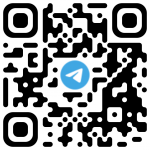在网上买了Cambridge Enlish教材,剑桥雅思4 Visual Symbols and the Blind 翻译,开始看Cambridge Enlish这些教材时好多单词不认识,只好在手机上安装app一个一个单词的查,笔者开始看这个教材时没有按照顺序看,拿着剑桥雅思4书就开始了。
但看到阅读时,一是太长,二是好多单词不认识,于是为了加深理解,将教材自已用 google 翻译出来放这,帮助有需要的人。
提示:google 翻译[cn域名]2022年10月已经不能使用,如果你有上网工具,可以使用com域名的google翻译,https://translate.google.com/

剑雅真题分为学术类和培训类,购买时需要分清你需要书的类型。
学术类购买地址:
培训类购买地址:
剑桥雅思4 Visual Symbols and the Blind 翻译-Test 1-Passage 3
Visual Symbols and the Blind 翻译
剑桥雅思4 Test 1-Passage 3 第三篇文章的主题是关于盲人是否能够理解视觉符号的问题。文章分为两大部分,第一部分探讨盲人对具体的图形的认知,共有5个自然段;第二部分探讨盲人对抽象符号的理解,包括3个自然段。以下是剑桥雅思阅读中文翻译 Visual Symbols and the Blind 翻译-Test 1-Passage 3中文翻译对照:
From a number of recent studies, it has become clear that blind people can appreciate the use of outlines and perspectives to describe the arrangement of objects and other surfaces in space. But pictures are more than literal representations. This fact was drawn to my attention dramatically when a blind woman in one of my investigations decided on her own initiative to draw a wheel as it was spinning. To show this motion, she traced a curve inside the circle (Fig. 1). l was taken aback. Lines of motion, such as the one she used, are a very recent invention in the history of illustration. Indeed, as art scholar David Kunzle notes, Wilhelm Busch, a trend-setting nineteenth-century cartoonist, used virtually no motion lines in his popular figures until about 1877.
从最近的许多项研究中可以明显看出,盲人能够理解用轮廓和透视图来描述物体的排列和空间中其他的表面。但是图片不仅仅是文字上的表述。当我的一项调查中的一位盲人女士主动决定画出一个正在旋转的车轮的时候,这一事实引起了我的极大注意。为了显示这一动作,她在圆内绘制了一条曲线。我吃了一惊。她所使用的运动的线条是图示发展史上最近才有的发明。确实,正如艺术学者David Kunzle 指出的那样,Wilhelm Busch,一位19世纪引领潮流的漫画家,直到1877年左右才开始在他广受欢迎的人物中使用动态线条。
When l asked several other blind study subjects to draw a spinning wheel, one particularly clever rendition appeared repeatedly: several subjects showed the wheel’s spokes as curved lines. When asked about these curves, they all described them as metaphorical ways of suggesting motion. Majority rule would argue that this device somehow indicated motion very well. But was it a better indicator than, say, broken or wavy lines – or any other kind of line, for that matter? The answer was not clear. So I decided to test whether various lines of motion were apt ways of showing movement or if they were merely idiosyncratic marks. Moreover, I wanted to discover whether there were differences in how the blind and the sighted interpreted lines of motion.
当我让其他几个盲人研究对象绘制旋转的轮子的时候,一种特别聪明操作反复出现:一些研究对象用曲线来表示轮子中的辐条。当被问及这些曲线时,他们都将它们描述为暗示运动的比喻方式。多数规则认为这种方法很好的指出了运动。但这是否比断线或波浪线或其他任何类型的线更好呢?答案尚不清楚。因此,我决定测试各种运动线是否是显示运动的合适方式,或者它们仅仅是特质标记。此外,我想发现盲人和视力正常的人在解释运动线之间是否存在差异。

To search out these answers, I created raised-line drawings of five different wheels, depicting spokes with lines that curved, bent, waved, dashed and extended beyond the perimeter of the wheel. I then asked eighteen blind volunteers to feel the wheels and assign one of the following motions to each wheel: wobbling, spinning fast, spinning steadily, jerking or braking. My control group consisted of eighteen sighted undergraduates from the University of Toronto.
为了寻找这些答案,我创建了五个不同车轮的凸起线条图,描绘了带有弯曲、弯曲、波浪、虚线和延伸到车轮周边之外的线条的辐条。 然后,我让 18 名盲人志愿者感受轮子,并为每个轮子指定以下运动之一:摇晃、快速旋转、稳定旋转、急转或制动。 我的对照组由来自多伦多大学的 18 名视力正常的本科生组成。
All but one of the blind subjects assigned distinctive motions to each wheel. Most guessed that the curved spokes indicated that the wheel was spinning steadily; the wavy spokes, they thought, suggested that the wheel was wobbling; and the bent spokes were taken as a sign that the wheel was jerking. Subjects assumed that spokes extending beyond the wheel’s perimeter signified that the wheel had its brakes on and that dashed spokes indicated the wheel was spinning quickly.
除了一个盲人受试者之外,所有受试者都为每个轮子分配了独特的运动。 大多数人猜测弯曲的辐条表明车轮正在稳定旋转。 他们认为,波浪状的辐条表明车轮正在摇晃。 弯曲的辐条被认为是车轮抖动的标志。 受试者认为,伸出车轮周边的辐条表示车轮已刹车,而虚线辐条则表示车轮正在快速旋转。
In addition, the favoured description for the sighted was the favoured description for the blind in every instance. What is more, the consensus among the sighted was barely higher than that among the blind. Because motion devices are unfamiliar to the blind, the task I gave them involved some problem solving. Evidently, however, the blind not only figured out meanings for each line of motion, but as a group they generally came up with the same meaning at least as frequently as did sighted subjects.
除此之外,在每一案例中,视力正常的人跟盲人所偏爱的描述一模一样。而且,视力正常的人的共识程度只比盲人高一点。因为运动装置是盲人不熟悉的,所以我给他们的任务涉及到一些解决问题的方法。但是,显然,盲人不仅弄清楚了每种运动线条的含义,而且作为一个整体,他们至少会和视力正常的人一样频繁地得出相同的含义。
以下是剑桥雅思4 Visual Symbols and the Blind 翻译-Test 1-Passage 3第2部分,共3个段落:
We have found that the blind understand other kinds of visual metaphors as well. One blind woman drew a picture of a child inside a heart – choosing that symbol, she said, to show that love surrounded the child. With Chang Hong Liu, a doctoral student from China, I have begun exploring how well blind people understand the symbolism behind shapes such as hearts that do not directly represent their meaning.
我们发现盲人也能理解其他类型的视觉隐喻。 一位盲人妇女在心脏中画了一张孩子的照片——她说,选择这个符号是为了表明爱围绕着孩子。 与来自中国的博士生刘长红一起,我开始探索盲人如何理解形状背后的象征意义,比如心形等不直接代表其意义的形状。
We gave a list of twenty pairs of words to sighted subjects and asked them to pick from each pair the term that best related to a circle and the term that best related to a square. For example, we asked: What goes with soft? A circle or a square? Which shape goes with hard?
我们给有视力的受试者提供了一个包含 20 对单词的列表,并要求他们从每对单词中挑选出与圆形最相关的词和与正方形最相关的词。 例如,我们问:软是什么? 圆形还是方形? 哪种形状适合硬?
All our subjects deemed the circle soft and the square hard. A full 94% ascribed happy to the circle, instead of sad. But other pairs revealed less agreement: 79% matched fast to slow and weak to strong, respectively. And only 51%linked deep to circle and shallow to square. (See Fig. 2.) When we tested four totally blind volunteers using the same list, we found that their choices closely resembled those made by the sighted subjects. One man, who had been blind since birth, scored extremely well. He made only one match differing from the consensus, assigning ‘far’ to square and ‘near’ to circle. In fact, only a small majority of sighted subjects- 53% – had paired far and near to the opposite partners. Thus, we concluded that the blind interpret abstract shapes as sighted people do.

我们所有的受试者都认为圆是软的,正方形是硬的。 整整 94% 的人都对这个圆圈感到高兴,而不是悲伤。 但其他配对显示的一致性较低:79% 的配对分别是快到慢和弱到强。 只有 51% 的人将深与圆联系起来,将浅与方联系起来。 (见图 2。)当我们使用相同的列表测试四名完全失明的志愿者时,我们发现他们的选择与有视力的受试者的选择非常相似。 一个从出生就失明的男人得分非常高。 他只做了一个与共识不同的匹配,将“远”分配给正方形,将“近”分配给圆形。 事实上,只有一小部分有视力的受试者——53%——与对面的伴侣远近配对。 因此,我们得出的结论是,盲人像视力正常的人一样解释抽象形状。

剑桥雅思4阅读中文翻译导航
- 剑桥雅思4阅读中文翻译-Test 1-Passage 1
- 剑桥雅思4 What Do Whales Feel 翻译-Test 1-Passage 2
- 剑桥雅思4 Visual Symbols and the Blind 翻译-Test 1-Passage 3
- 剑桥雅思4 Lost for Words 翻译-Test 2-Passage 1
- 剑桥雅思4 Alternative Medicine in Australia 翻译-Test 2-Passage 2
- 剑桥雅思4 Play is a Serious Business 翻译-Test 2-Passage 3
- 剑桥雅思4 Micro-Enterprise Credit for Street Youth 翻译-Test 3-Passage 1
- 剑桥雅思4 volcanoes earth shattering news 翻译-Test 3-Passage 2
- 剑桥雅思4 Obtaining Linguistic Data翻译-Test 3-Passage 3

感兴趣的朋友请收藏本站,剩下的内容本站会持续更新。

【江湖人士】(jhrs.com)原创文章,作者:江小编,如若转载,请注明出处:https://jhrs.com/2022/45230.html
扫码加入电报群,让你获得国外网赚一手信息。
